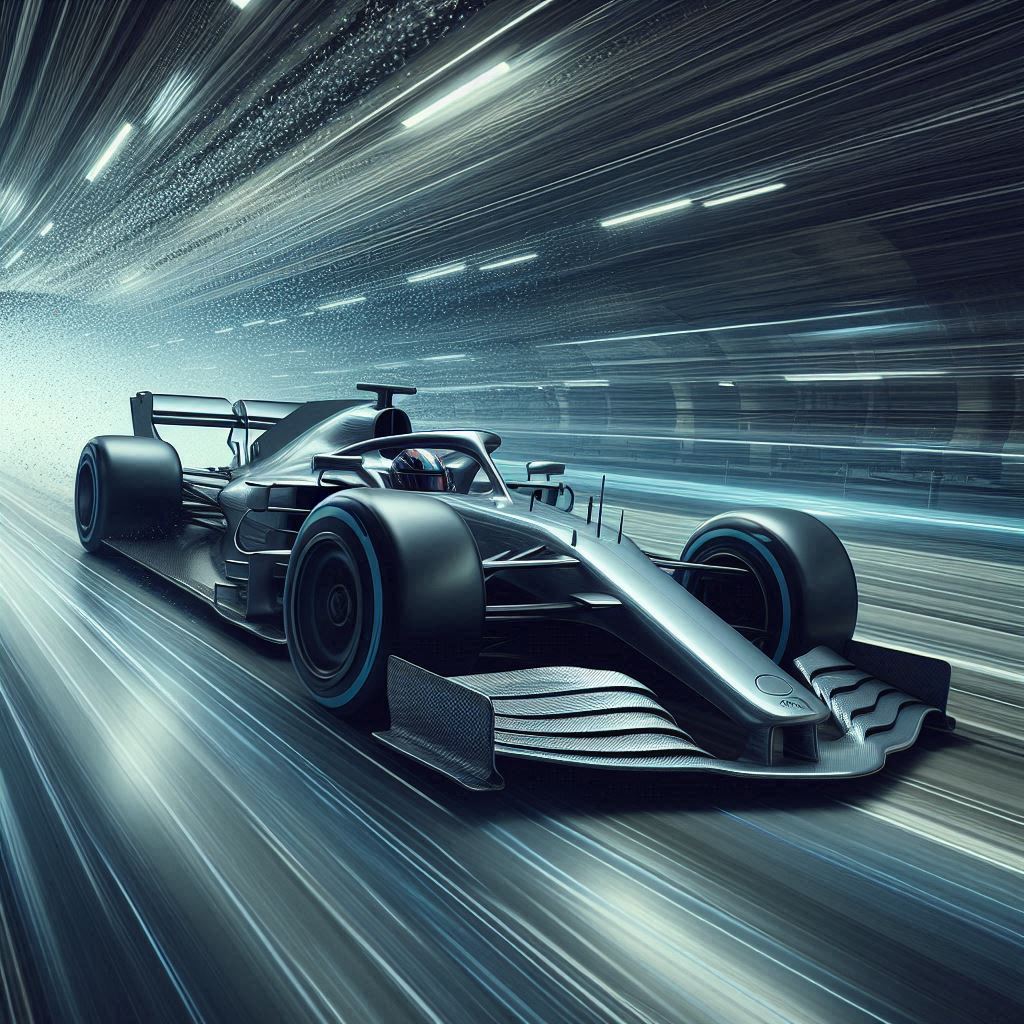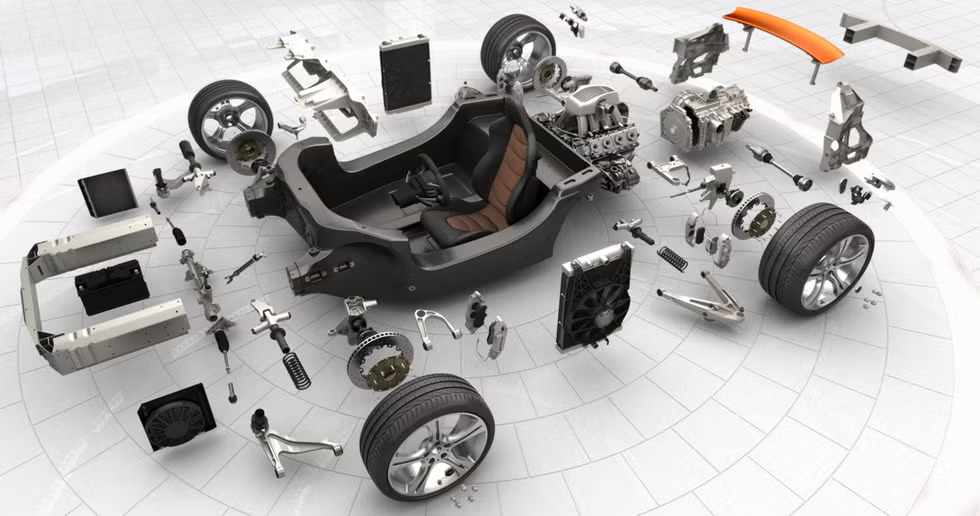
<H1> Understanding the Importance of Aerodynamics in Racing Car Design
The Principles of aerodynamics of racing cars determine how racing vehicles operate because they affect vehicle speeds together with stability and fuel usage. The high speed environment of motorsports requires any minor change to aerodynamic characteristics because they create measurable changes in performance. Formulation of efficient aerodynamics by engineers achieves two main benefits as it keeps vehicles faster on direct routes and produces better steering stability. Aerodynamic optimization permits racing cars to navigate air contact with greater efficiency thus producing reduced resistance together with superior response abilities. Advanced aerodynamic technologies can enhance tire traction because this serves as a key requirement for achieving maximum performance on the track. A perfectly designed aerodynamic structure in competitive racing requires exactly three essential elements which unite to become crucial for competitive success: speed and control and safety.
<H2> How Evocrates is Revolutionizing Electric Car Design with Aerodynamics
Evocrates takes the lead in defining electric car designs using aerodynamic technology as the foundation. Racing car aerodynamics plays a central role to enhance performance optimization of electric vehicles (EVs) which are becoming increasingly popular. Evocrates uses design innovations to drain airflow while decreasing drag which leads to improved electric car performance metrics. Their design strategy produces slim vehicle shapes which improve both performance speed and vehicle stability and increase efficiency through energy efficiency. Evocrates uses advanced technology with their understanding of racing car aerodynamics to develop electric cars that perform better while being faster along with being more efficient and environmentally conscious and incredibly stylish at the same time.
<H3> The Role of Aerodynamics in Maximizing Racing Car Performance
The optimal performance of racing cars depends heavily on aerodynamics because it shapes fundamental characteristics which include speed capability together with stability features and fuel utilization efficiency. Racing aerodynamics operates by directing air movement over a vehicle to achieve its highest track capabilities. A car requires reduced drag and increased downforce to achieve functional high speeds and cornering performance.
Minimizing Drag:
The moving car deals with air resistance forces known as drag during its flight through the atmosphere. Competitive vehicles require minimal air drag since this reduces their straight-line speed. The resulting design of sleek components with low air drag enables faster movement of cars through the atmosphere. A smoother vehicle exterior requires less energy from the engine to overcome air resistance against the moving vehicle. Racing cars incorporate rear wings alongside side skirts and underbody panels which feature optimal shapes to direct airflow past the vehicle and avoid turbulence formation.
Maximizing Downforce:
The vertical force which pushes automobiles toward the road surface is known as downforce. A car requires this force for better tire control especially when cornering at high speeds since traction becomes an issue. The creation of increased downforce enables vehicles to stay firmly on the road during quick turns. The main struggle occurs from maintaining proper ratios between downforce and drag performance. Downforce grows stronger when more force is applied but it creates additional drag that reduces vehicle speed on straight lines. A racing engineer needs to optimize the aerodynamic setup until it reaches the perfect balance for various racing tracks.
Wind Tunnel Testing and Computational Fluid Dynamics (CFD):
Racers needed to accomplish precise aerodynamic tuning of their cars by performing wind tunnel examinations and conducting CFD simulations. The testing environment at wind tunnels shows physical car models to designers so they can see streamlines and CFD software produces virtual simulations of airflow movements. Performance analysis through these methods makes it possible to understand the complete influence of car elements on performance which leads to accurate modifications that happen before track activity.
<H4> Impact of Aerodynamics on Racing Car Designing
Aerodynamics in racing car designs causes massive effects since it manages how vehicles perform while establishing speed and stability and handling characteristics. Sustained downforce ability and minimal drag form the base of aerodynamic success because they allow high-speed cornering together with straight-line performance. A racing car design extends past visual appeal since engineers need to refine every surface and component angle to minimize drag while maximizing track surface grip.
The focus in racing vehicle design & engineering exists in producing a form factor that fights against drag forces. The design process of smooth bodywork with low drag, efficient underbody design and strategically installed front and rear wings, diffusers and side skirts purposes aerodynamic performance. High-speed maintenance stability requires the use of these components which serve dual purposes by improving aerodynamic performance. Trajectory through the air represents only one aspect of racing car design because downforce generation through track contact creates pushing power that affects tire friction and improves cornering efficiency. To accomplish high speeds while achieving turn stability and control the vehicle needs precise aerodynamic balance.
Electric car design prioritizes aerodynamics for more reasons than just performance because it demands manufacturers consider both the interior space requirements and battery compartment positions. Designers implement aerodynamic concepts similar to those in racing automobiles with special attention to energy reduction since this maximizes the capability of electric vehicles to travel between charges. Detached front grilles and smooth rounded exterior features and underbody airflow channels in electric cars drive down air drag for extended driving distance.
<H5> Conclusion
Both racing car design and electric vehicle design heavily depend on aerodynamics to maximize their performance capabilities and speed and stability while improving their efficiency level. Motor sports demand absolute aerodynamic efficiency because each second on the track directly affects racing performance. The drag reduction and downforce optimization work of engineers allows racing cars to preserve their speed and operational control at all times including complex moments during corner turns.
The primary function of aerodynamics in electric car development is distinct from racing vehicles yet conservation of power remains crucial.
.jpg.webp)

.jpg)
.png)

Leave your thought here
Your comments are valuable for us. Required fields are marked *